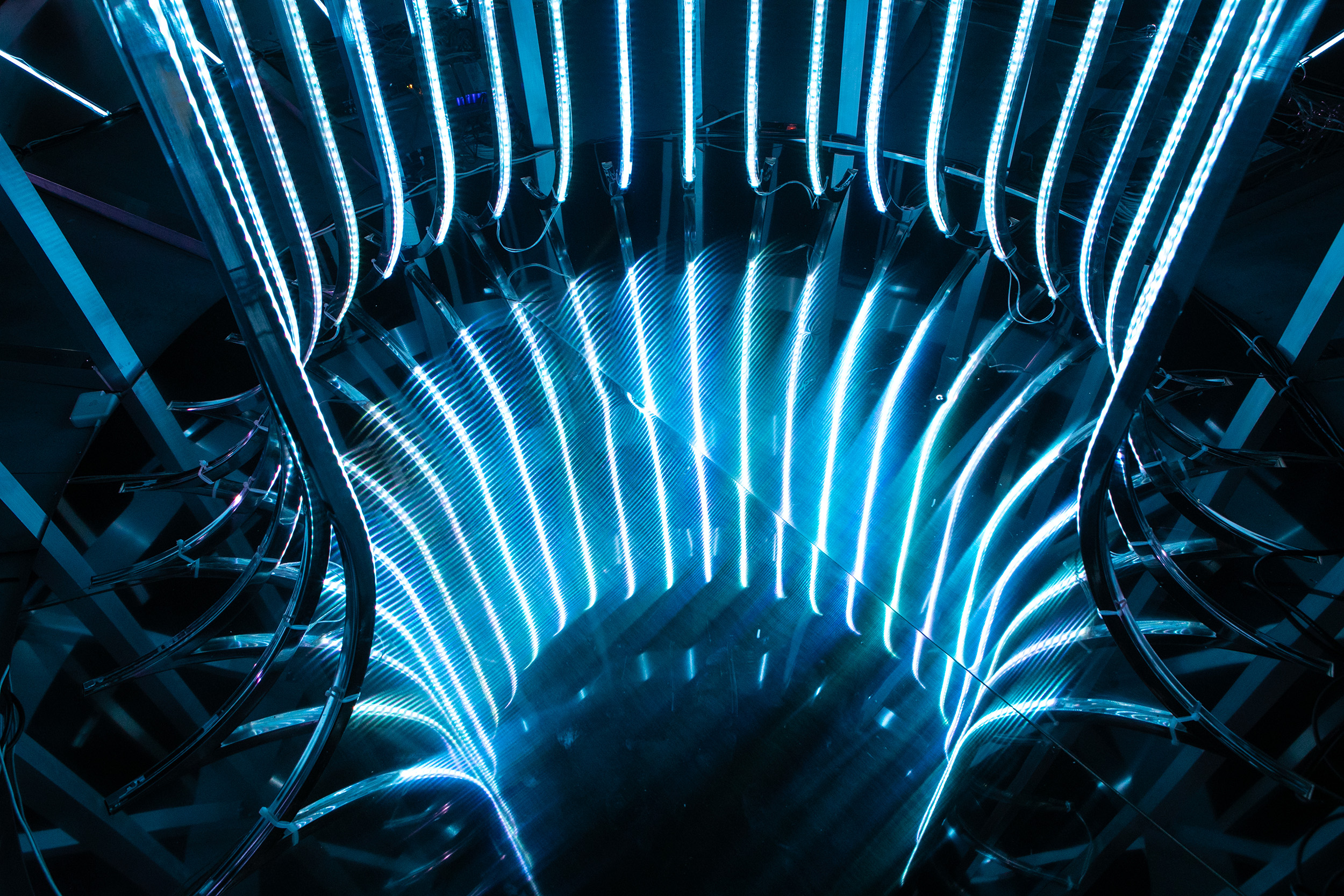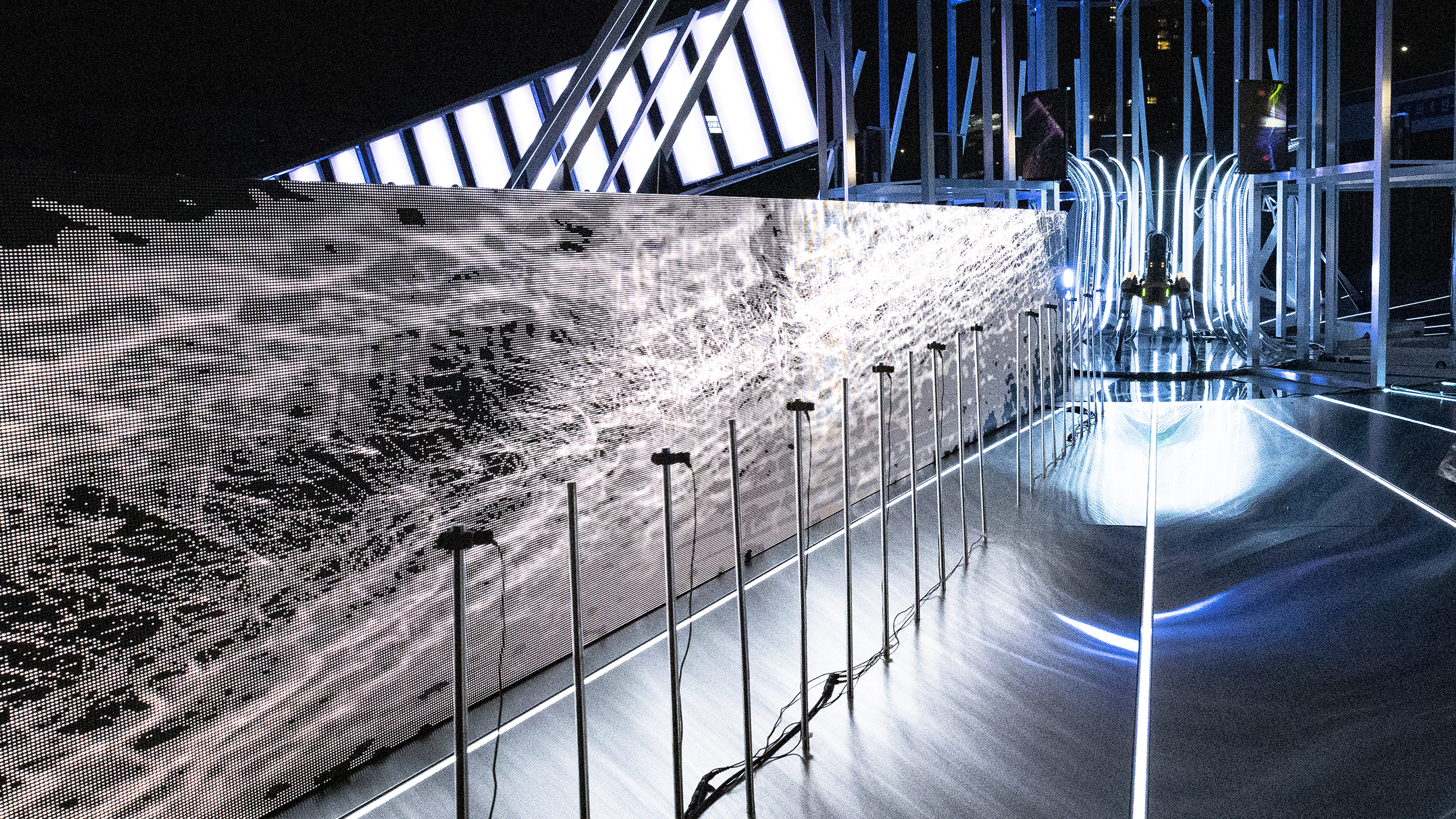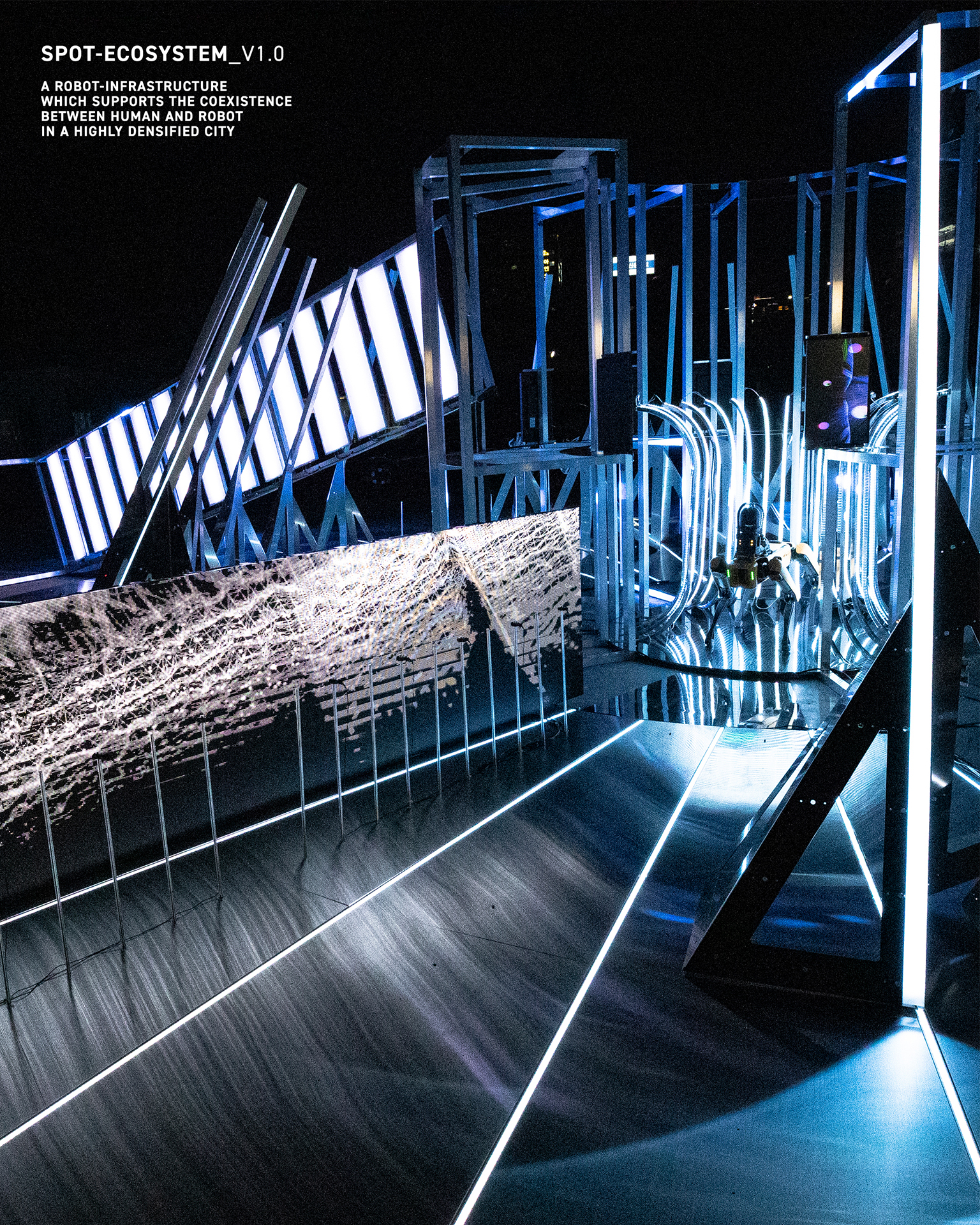At CES 2022, one of the world’s largest technology exhibitions, Hyundai Robotics introduced hotel robots, F&B robots, and quarantine robots. It is no exaggeration to say that robots have even come closer to the accommodations where we eat and sleep. Artist group IVAAIU CITY envisions a near future where quadrupedal robots appear on the road.
Robot Dog on the road, SPOT
SPOT is a quadruped walking robot developed by Boston Dynamics. When translates SPOT, it means the same as ‘Badugi (meaning ‘spotted’ in Korean)’, but the actual appearance also resembles a dog. The difference is that the joints move freely, and the physical force is strong enough to crush the iron plate by hitting the floor. Therefore, it is also used to collect data from new construction sites for concert halls, apartment, etc. NASA remodeled SPOT in December 2020 to produce an ‘Au-SPOT’ for Mars exploration so that the scope of the SPOT’s activities is limitless far more than we can imagine.
Infrastructure for SPOT
“What would a city look like with one robot per person?”
IVAAIU CITY imagined a road of 2030 where SPOT is distributed and implemented it as an installation. They made a separate structure and layer for SPOT. As a team of artists actively working in the fields of urban planning, architecture, electronic music, visual arts, and performance direction, they were thinking about the infrastructure of the city. They predicted that the robots will bring greater physical changes in cities including SPOT over the next 30 years, than PCs and smartphones, which have driven technological development in the past 30 years. This is because the area that PCs and smartphones have changed is primarily the virtual world, while robots can interact with people everywhere on roads and buildings.
IVAAIU CITY has created a separate booth for SPOT to move, charge, and share information just like a subway track. They implemented a smooth dedicated road made of metal, a wireless charging pad that supplies electricity from the floor, and a display that shows the sound of SPOT as a graphic image.
These robotic infrastructures are not created out of vague fantasies but are designed according to explicit principles. The principles established by IVAAIU CITY are:
SPOT-ECOSYSTEM Version 1.0
Principle 1 _ To designate a dedicated area for SPOT to move in the infrastructure constituting the road (ref. bike lanes).
Principle 2 _ To conduct wireless charging for SPOT in the dedicated area.
Principle 3 _ SPOT shares the city’s underlying data through a distributed optical fiber sensing system in the dedicated area.
Principle 4 _ The dedicated area is used as a community space where multiple SPOTs can share information with each other while charging before the next mission.
Principle 5 _ To visualize the sound of SPOT in the dedicated area and express the movement and sound of SPOT comfortably and utilize it as a device of overcoming *the Uncanny Valley.
*The Uncanny Valley: As a theory proposed by robotics engineer Mori, it refers to an emotional response that has more favors when robot’s appearance becomes more similar to a human’s but feels a strong rejection when it looks more like a human exceeding a certain level.
If this infrastructure works out, SPOT will be able to rescue more people from disaster sites and transport physical things faster. It can work as a great tool under the system control, not as an unknown AI.
Road to the future
Technology penetrates our daily life, changing the existing rules and orders to make them more convenient. Of course, the process of establishing a new order is bound to cause chaos. It is just like when an electric scooter, a comfortable means of transportation, suddenly appears on the road, it becomes dangerous. We cannot face the future without knowing what is going to happen. If the future is to come anyway, it would be wiser to pave the way ahead of time.
The dedicated road network for SPOT may become an essential infrastructure for a competitive city of the future, such as an underground sewer or subway. That is why IVAAIU CITY’s imagination, examining unexplored areas, is valuable.
About the Artist
IVAAIU CITY is a new media creators group based in Seoul and Tokyo. Starting with an urban planning thesis of the same name with DongUk Lee, team director in 2013 [IVAAIU Urban Instrument: Hyper-Complex Civic Monument], They proceed with projects pursuing for future urban design by integrating and engaging 6 different media of Idea – Visual – Audio – Architecture – Infrastructure – Urbanism. They have been creating their own works in various fields such as new media installation, audio-visual performance, new structure system design, and future city planning. Currently, 6 different artists/designers from various fields are associated including DongUk Lee, a city planner/architect/musician, Yangho Shin, a visual artist/stage director, Sung-su Park, a new media architect, Hiroto Takeuchi, a sound designer and Jiin Yoon, a product designer. The group has been working on projects of a new city that is created by the convergence of current technologies and artistic ideals through multi-genre works.





